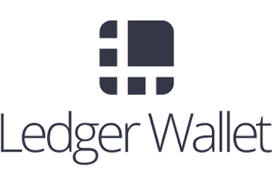
Who would have guessed that the crypto universe contains black holes? That may seem impossible, but in a way it does. A crypto wallet that accepts coin or token deposits but is otherwise inaccessible is a black hole’s digital equivalent. You might be asking yourself why someone would send cryptocurrency to a wallet that only accepts deposits.
While it’s possible to lose coins by sending crypto to one of these wallets, this article isn’t about coins and tokens lost by mistake. It might be even more puzzling to find out it is done intentionally. This practice, known as coin or token burning, is typically conducted by coin creators or developers. They deposit the crypto they intend to burn into these specialized wallets, also known as an eater address.
So, why are these one-of-a-kind wallets only accepting deposits and not withdrawals? Because these unique wallets have public addresses but no private keys. No one can access a wallet without a private key. Coins or tokens sent to this type of wallet are permanently lost.
How Does Burning Coins Work?
To burn coins, you deposit them into a wallet with no private key. Anything that makes the coins inaccessible would be considered coin burning. Developers primarily carry this out, as it would make little sense for anyone else to throw away their coins or tokens.
A variety of reasons exist for someone to burn cryptocurrency. Burning coins serves as a supply control and price stabilization technique, particularly in the case of a stablecoin. Coins are also occasionally burned to reward investors and raise the value of the coin or token. The circulating and total supply of coins and tokens decrease as they are burned. This decrease in supply promotes scarcity, which might result in a price increase. Coin and token burning can have a comparable effect to stock market buybacks.
Image Credit: Binance
Ethereum (ETH) began burning a portion of each transaction fee in August 2021. This token burn is a built-in component of the London Hard Fork’s Ethereum Improvement Proposal-1559 (EIP-1559) protocol. Another large market cap cryptocurrency burning coins is Binance (BNB). In late 2017, Binance initiated a burn program that would burn coins every quarter until 100 million coins are destroyed. The 100 million coins represent 50% of the total of BNB ever issued. To date, there have been 17 quarterly coin burns destroying 33,199,679 coins.
Binance announced an update to its burn program on December 23. This update would immediately take effect and convert quarterly burns to continuous auto burns. Instead of basing the burn off quarterly profits, the auto burn software will burn coins dependent on the price of BNB. Once the overall supply is decreased to less than 100 million, the auto burn will cease.
Ethereum Burn With EIP-1559
Because of the implementation of EIP-1559 as part of the London Hard Fork on August 5, a large portion of each Ethereum transaction fee is now burned. According to Watch the Burn, 1,298,671 ETH has been destroyed since then. This built-in protocol has acted as a deflationary force, lowering ETH’s inflation rate from around 4% to roughly 1.25%.
Does Bitcoin Burn Coins?
Bitcoin developers do not burn their coins. However, many Bitcoin have been purposely and mistakenly burned over the years. In 2014, Counterparty destroyed 2,124 Bitcoin in a procedure known as proof-of-burn to produce their own native token XCP. The Bitcoin was transferred to a wallet with no private key, rendering it unrecoverable. Counterparty is a peer-to-peer cryptocurrency trading platform. It is a free and open-source protocol built on the Bitcoin network.
According to current estimations, up to 20% of all Bitcoin mined so far has been lost. They may still be viewed on the blockchain but never accessed. In a variety of ways, this Bitcoin has been rendered useless. The owners may have died, or investors may have lost their private keys. In the early days of crypto, Bitcoin private keys were sometimes saved on hard disks that were later lost.
In one prominent case in 2013, a British man named James Howells claims to have thrown away a hard disk containing 7,500 Bitcoin. Also, Satoshi Nakamoto is thought to have mined between 750,000 and 1 million Bitcoin, which was transferred to multiple wallets. It does not appear as if that Bitcoin has been spent to date.

Cryptocurrencies That Burn Tokens
Here is a partial list of cryptocurrencies that burn coins or tokens.
- Ethereum (ETH): EIP-1559 protocol.
- Binance (BNB): Auto Burn Program (a total of 100 million will be burned).
- Stellar (XLM): Burned 55 billion XLM tokens in 2019.
- Shiba Inu (SHIB): 1.14 billion tokens were burned Christmas week
- Einsteinium (EMC2): Burned 50 million coins in December 2017.
- INVAO (IVO): 20% of annual operating profits will buy back and burn tokens.
- Filecoin (FIL): The Filecoin burn mechanism burns a part of each gas fee.
Memecoin Reflection Fees
Reflection fees are taxes that are applied to each transaction. The amount of tax varies depending on the coin. The revenue from the reflection fees is distributed between all holders, liquidity pools and sometimes burner wallets. A smart contract manages the reflection mechanism, making it trustless and decentralized.
This approach can compensate investors for holding coins or tokens. Long-term hodlers may be rewarded if coins or tokens are transferred to a burner wallet. One issue is that meme coins typically have huge coin supplies, so while burning helps, it is unlikely to significantly impact the coin or token price.
Where To Buy Ethereum and Binance Coin
You can purchase ETH on any cryptocurrency exchange through various brokers or PayPal. Coinbase Global Inc. (NASDAQ: COIN) is available in over a hundred countries and is particularly popular among beginners. It features an easy-to-navigate trading platform and a sizable cryptocurrency variety. Additionally, you can purchase ETH using eToro, Webull, Robinhood Markets Inc. (NASDAQ: HOOD) or Voyager.
If you’re looking to purchase BNB, the list of exchanges that support it is a little more limited. Naturally, you can buy BNB on Binance (Binance.US for U.S. investors). Additionally, you can purchase BNB through eToroX (eToro’s crypto exchange) and FTX.
Coinbase is one of the Internet’s largest cryptocurrency trading platforms. From Bitcoin to Litecoin or Basic Attention Token to Chainlink, Coinbase makes it exceptionally simple to buy and sell major cryptocurrency pairs.
You can even earn cryptocurrency rewards through Coinbase’s unique Coinbase Earn feature. More advanced traders will love the Coinbase Pro platform, which offers more order types and enhanced functionality.
Though Coinbase doesn’t offer the most affordable pricing or the lowest fees, its simple platform is easy enough for complete beginners to master in as little as a single trade.
Best For
- New cryptocurrency traders
- Cryptocurrency traders interested in major pairs
- Cryptocurrency traders interested in a simple platform
- Simple platform is easy to operate
- Comprehensive mobile app mirrors desktop functionality
- Coinbase Earn feature rewards you with crypto for learning about available coins
- Higher fees than competitors
Gemini is a cryptocurrency exchange and custodian that offers investors access to 26 coins and tokens. Founded in the US, Gemini is expanding globally, in particular into Europe and Asia. Offerings include both major cryptocurrency projects like Bitcoin and Ethereum, and smaller altcoins like Orchid and 0x.
Gemini is 1 of the only brokers with multiple platform options based on skill level. New investors will love the streamlined interface of Gemini’s mobile and web apps, while advanced investors might appreciate all the tools that come with ActiveTrader.
In addition to a host of platform choices, Gemini users also have access to insured hot wallets to store tokens without worrying about digital asset theft. Learn more about what Gemini can do for you in our review.
Best For
- New investors looking for a simple mobile and web app
- Experienced investors who need a more advanced platform with more tools
- Users looking for a 1-stop-shop to buy, sell and store all of their coins
- Easy and quick signups — can get started in as little as a few minutes
- Multitude of platforms to accommodate traders of all skill levels
- Hot wallets include insurance to protect your from theft and hacking attempts
- Charges both a commission and a convenience fee for users buying and selling through the desktop or mobile app

claim free Bitcoin
securely through Voyager’s
website
Disclosure: *Other fees may apply.
Voyager is a leading name in the sphere of cryptocurrency investing, giving you access to over 50 tokens and coins. Buy, sell and swap assets using Voyager Crypto’s simple mobile platform available as a free download for iOS and Android users.
When you invest through Voyager, you’ll pay nothing in commissions, which is a major benefit when compared to other cryptocurrency brokers. Voyager is also one of the only brokers we’ve seen that allows users to earn interest on their crypto investments.
Though the broker could do more to improve its customer service, it’s an excellent option for beginner investors and seasoned professionals alike.
Best For
- Cryptocurrency investors looking for a wide selection of supported projects.
- Investors who prefer mobile trading.
- Anyone interested in earning interest on their crypto investments.
- Simple, straightforward and intuitive mobile platform
- Wealth of investment opportunities
- Allows users to earn interest on select crypto investments
- Only available for mobile users — no desktop platform
- Limited routes to contact customer service team
How To Store Cryptocurrency Safely
It is generally not a good idea to hold significant amounts of cryptocurrency on exchanges. Cryptocurrency exchanges are periodically hacked, so leaving your crypto on an exchange exposes you to the danger of loss. For the ultimate in security, you’ll want a hardware wallet.
Hardware wallets are the most secure because of the security features built into them and the fact that when you are not using them, they can be isolated from the internet. Internet isolation makes it virtually impossible to hack them.
One of the best hardware wallets on the market is the Ledger, available in two models, the Nano S and the Nano X. Both models can be purchased directly from Ledger or Amazon.

buy now
securely through Ledger Hardware Wallet’s
website
Launched in 2014, Ledger has transformed into a fast-paced, growing company developing infrastructure and security solutions for cryptocurrencies as well as blockchain applications for companies and individuals. Born in Paris, the company has since expanded to more than 130 employees in France and San Francisco.
With 1,500,000 Ledger wallets already sold in 165 countries, the company aims at securing the new disruptive class of crypto assets. Ledger has developed a distinctive operating system called BOLOS, which it integrates to a secure chip for its line of wallets. So far, Ledger takes pride in being the only market player to provide this technology.
Best For
- ERC-20 tokens
- All experience levels
- Easy to set up and use
- Supports more than 1,500 different digital assets
- Tamper proof
- Portable
- Long-lasting battery
- Bluetooth connectivity features
Does Coin Burning Affect Price?
Each coin or token that is burned diminishes the supply and may have an effect on the price. When scarcity is increased, prices typically appreciate. Of course, the result depends on other things, too, such as the coin’s demand. The initial supply size will also determine whether or not the price is significantly impacted. Typically, burning coins is a long-term process, not something that would dramatically increase the price with a single burn.
Benzinga crafted a specific methodology to rank cryptocurrency exchanges and tools. We prioritized platforms based on offerings, pricing and promotions, customer service, mobile app, user experience and benefits, and security. To see a comprehensive breakdown of our methodology, please visit see our Cryptocurrency Methodology page.
This news is republished from another source. You can check the original article here



